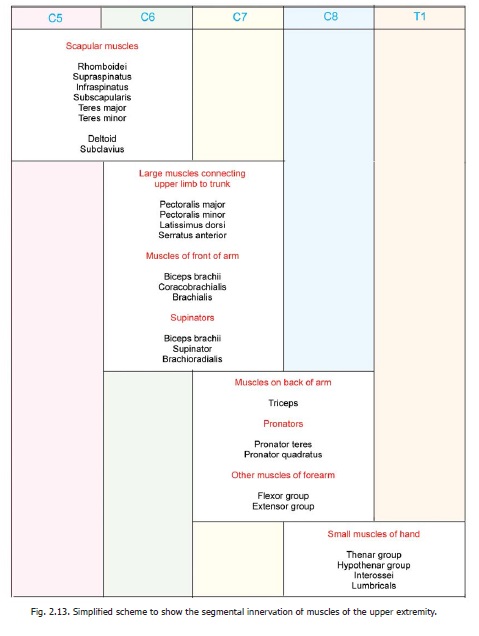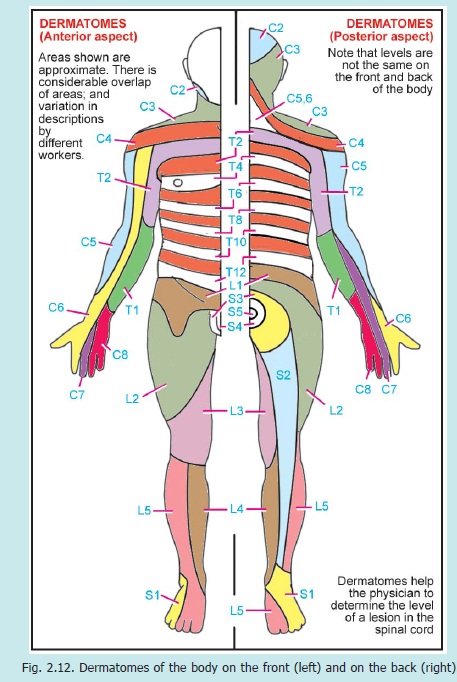Chapter: Human Neuroanatomy(Fundamental and Clinical): The Spinal Cord : Gross Anatomy and Some features of Internal Structure
Segmental Innervation of Muscles
SEGMENTAL INNERVATION OF MUSCLES
The nerve supply of muscles can also be described on the basis of spinal nerves from which the fibres are derived (or in terms of spinal segments).
a. It is rare for a muscle to be supplied only by one segment. One example is innervation of intrinsic muscles of the hand.
b. Most muscles derive innervation from two or more segments.
c. The segments supplying muscles acting on a joint also supply the joint itself.
d. Muscles having a common action are usually supplied by the same spinal segments.


The spinal segments supplying a muscle are often given differently in different books. This can be due to individual variations in the subjects studied, or due to different methods of investigation used. It is difficult to remember the segmental supply. A simplified presentation of the segments supplying the muscles of the upper limb is given in Fig. 2.13 and of the lower limb in Fig. 2.14. The integrity of spinal segments can also be tested by examining reflexes mediated by the segment.

Some Important Spinal Levels
1. Knee jerk or patellar tendon reflex (L2, L3, L4);
2. Ankle jerk or Achilles tendonreflex (L5, S1, S2).
3. Biceps tendon reflex (C5, C6);
4. Triceps tendon reflex (C6, C7, C8).
5. Supinator jerk (or radial periosteal reflex) (C7, C8).
6. Wrist tendon reflex (C8, T1).
7. Abdominal reflexes: upper (T6,7), middle (T8,9) and lower (T10 to T12)
8. Cremasteric reflex (T12 to L2).
9. Gluteal reflex (L4 to S1).
10. Plantar reflex (L5 to S2).
11. Anal reflex (S4,5, coccygeal).
12. Movements of the head (C1 to C4).
13. Movements of the diaphragm (C3 to C5).
Injury above C3 causes paralysis of all respiratory muscles
14. Movements of the upper extremity (C5 to T1). Injury above this level paralyses all four limbs (quadriplegia).
15. Movements of the lower extremity (L1 to S2). Injury above this level paralyses both lower limbs (paraplegia).
16. Filling of the urinary bladder (T12 to L2), and evacuation (S3 to S5).
17. Erection of the penis (S2 to S4).
18. Ejaculation (L1 and L2) (smooth muscle), and (S3 and S4) (striated muscle).
Related Topics